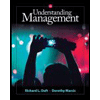PART l:
DRAWING ON MY EXPERTISE
1.
How do I provide students input and information?
Fisher, Frey, and Hattie (2020) implied that rather than teachers doing all the talking, students should be collaborating with their peers to improve student learning (p. 132). Hence, their input is valued. I will provide students opportunities to engage in dialogue and demonstrate what they know to their peers. I will provide students information by implementing shared sessions, direct instructions, lectures, and worked examples (Fisher, Frey, & Hattie, 2020, pp. 129-131).
2. How do I structure collaborative tasks?
I will ensure my students are aware of how important and powerful collaborative learning is and what is expected of each of them during the dialogue. As Fisher, Frey, and Hattie (2020) stated, “this is when the power of listening to others, thinking aloud themselves, and querying, justifying, and being curious are most successful” (p. 132). Setting up a routine will be critical as
well. In my virtual classroom, I will be consistent in the days and times I will allow for collaborative tasks. Therefore, students will know what to expect and what to do before, during, and after meeting with their groups.
2.
How do I guide students' thinking?
Rather than telling students what to think, I can guide them by asking authentic, open-ended questions, as recommended by Fisher, Frey, and Hattie (2020, p. 140). They also encouraged teachers to use reflective, procedure, and background knowledge prompts and visual, verbal, gestural, and environmental cues (pp.141-142) to guide students’ thinking. In my current residency, and one that I plan on also implementing in a virtual classroom, will be to meet with small groups based on their learning needs and to provide a coaching session. Sometimes students need an encouragement, a mediator, and extra time to get their thinking across.
4. How do I ensure students practice and apply what they have learned?
According to Fisher, Frey, and Hattie (2020), engaging in practice allows for information to stick and then be transferred (p. 144). To ensure students practice and apply what they have learned, I would design practice that are both spaced and deliberate. They will also review what they have learned by applying their knowledge to similar problems they have encountered in the past. By spacing out what they are to learn, they are learning in manageable chunks, which gives my students time to digest and reflect on what they learned rather than being overwhelmed with so much information. By having my students set realistic learning goals, they are more likely to engage in their practice to reach their goals, while also receiving feedback from me.
References:
Fisher, D., Frey, N., & Hattie, J. (2020).
The distance learning playbook, grades K-12: Teaching for engagement and impact in any setting.
Corwin, A SAGE Company.
PART ll:
THE ASSESSMENT PLAYBOOK REFLECTION


 Understanding Management (MindTap Course List)ManagementISBN:9781305502215Author:Richard L. Daft, Dorothy MarcicPublisher:Cengage Learning
Understanding Management (MindTap Course List)ManagementISBN:9781305502215Author:Richard L. Daft, Dorothy MarcicPublisher:Cengage Learning Management, Loose-Leaf VersionManagementISBN:9781305969308Author:Richard L. DaftPublisher:South-Western College Pub
Management, Loose-Leaf VersionManagementISBN:9781305969308Author:Richard L. DaftPublisher:South-Western College Pub
